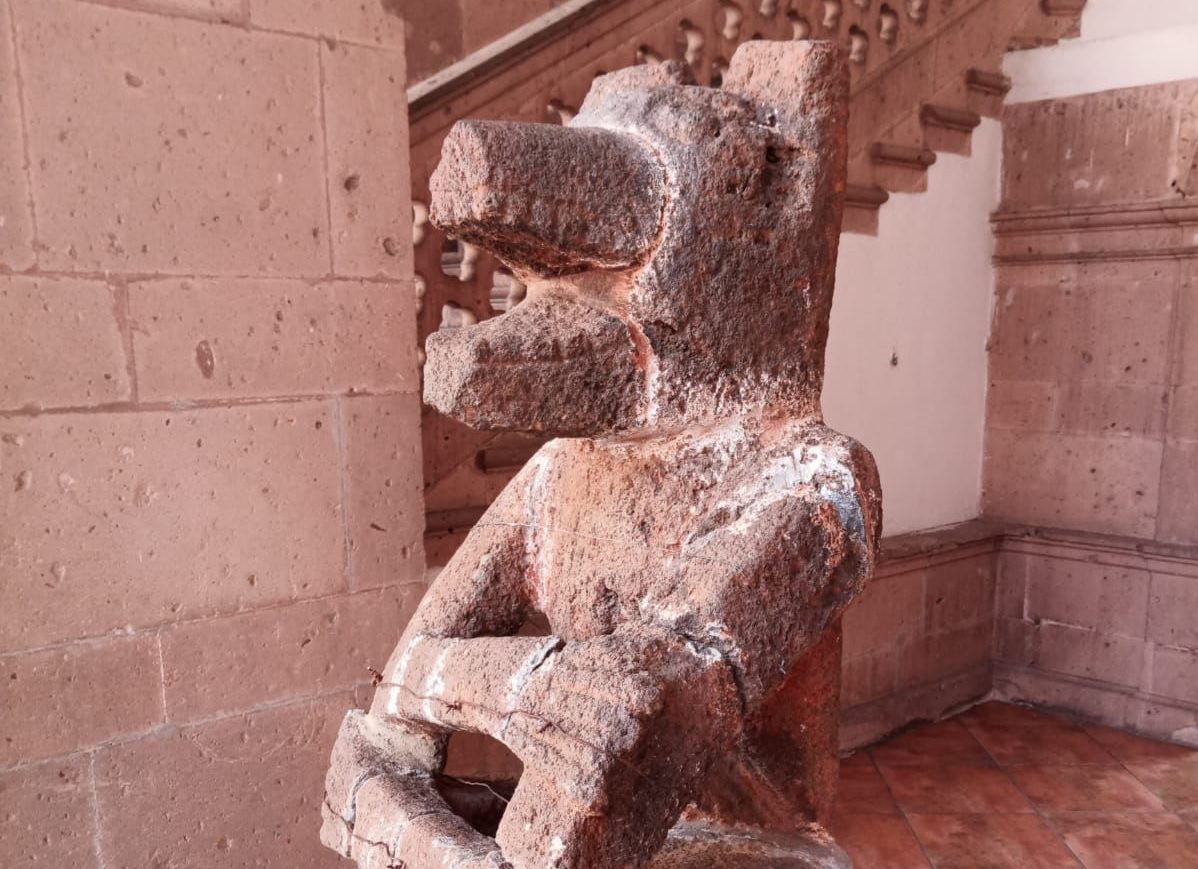Archaeologists from the Instituto Nacional de Antropología e Historia (INAH) have recovered an important sculpture from the Tarascan culture for the INAH Michoacán Centre.
The Tarascan civilisation (aka the Purépecha, after their language) was a Mesoamerican civilisation of the Post-Classic Period (AD 1400-1521) that dominated large parts of western Mexico, covering an area of over 75,000 square kilometres.
The coyote-man of Tacámbaro was discovered almost 30 years ago during drainage works in the Llanos de Canícuaro neighbourhood, municipality of Tacámbaro de Codallos, where during antiquity the Tarascan civilisation had constructed the city of Tzintzuntza (meaning “place of the hummingbirds” in the Purépecha language).
The sculpture depicts a coyote-man perched on a throne made of basalt, measuring 1.08 metres tall by 45 cm’s wide, which was held in private ownership until INAH recovered the sculpture through Mexico’s Federal Law on Monuments and Archaeological, Artistic and Historical Zones.
Archaeologist José Luis Punzo said: “Representations of coyotes and a dozen coyote-man figures have been found in Tzintzuntzan and Ihuatzio, very similar in their form to the one from Tacámbaro, but are generally smaller in size ranging from 40 to 50 centimetres.”
“We know that the last lords of Tzintzuntzan, who wrote the Relacion de Michoacán, were the so-called uacúsecha, the ‘lineage of the eagle’. Next to this was another large city on Lake Pátzcuaro, Ihuatzio, which means ‘place of coyotes’, where most of these sculptures have been located. One of the hypotheses is that the coyote-man sculptures could represent a dynasty that ruled this place, even before the Uacúsecha history was written” added Punzo.
Header Image Credit : INAH





